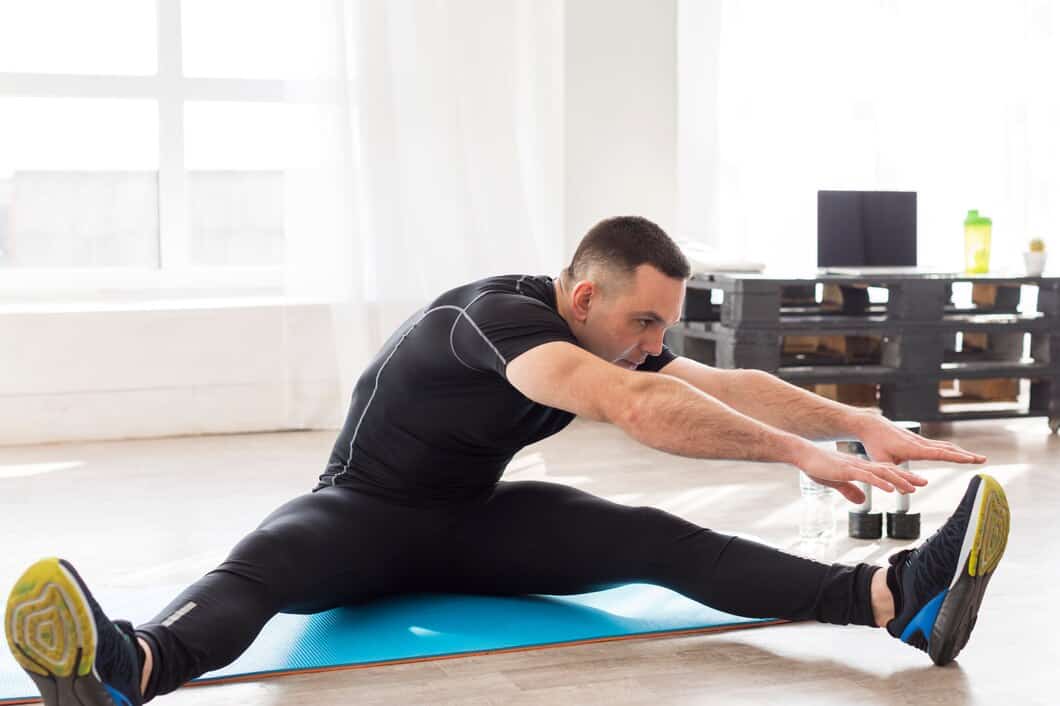The adductor muscles, found on the inner thigh, are essential for stabilizing the hips and legs during movement. Whether you’re an athlete or spend long hours sitting, these muscles are often overlooked until tightness or injury strikes. Stretching exercises for adductor muscles regularly help improve flexibility, preventing injuries, and aiding in the recovery process.
This guide will provide a detailed look at the top 7 stretching exercises to keep your adductors flexible, strong, and injury-free.
What Are the Adductor Muscles?
Overview of the Adductor Muscle Group
The adductor muscles consist of five distinct muscles found in the inner thigh. These include:
- Adductor Brevis
- Adductor Longus
- Adductor Magnus
- Gracilis
- Pectineus
Functions of the Adductors
The primary role of the adductors is to move the legs toward the body’s midline, a movement called adduction. These muscles are crucial in stabilizing the hips and maintaining balance during movements like walking, running, or even sitting.
Common Adductor-Related Injuries
The adductor muscles are susceptible to strains and tightness, especially in athletes or individuals who engage in high-intensity physical activities. Symptoms of an overworked adductor muscle can include pain, tightness, or reduced mobility. Stretching these muscles is one way to prevent such injuries.
Benefits of Stretching Exercises for Adductor Muscles
Improved Flexibility
Stretching the adductor muscles increases the range of motion in your hips and legs, making daily movements and athletic activities easier and more fluid.
Reduced Risk of Injury
Regularly stretching your adductors can help prevent common issues like hip adductor strains and groin pulls.
Enhanced Athletic Performance
For athletes, flexible adductors are key to improving performance in activities like running, jumping, or changing directions quickly.
Posture and Balance
Tight adductor muscles can negatively impact your posture and lead to imbalances in your body. Stretching these muscles can help correct these issues and improve overall stability.
Key Guidelines Before You Begin Stretching
Warm-Up Is Essential
It’s important to prepare your body with a warm-up before stretching. A few minutes of light cardio, such as walking or jogging, can prepare your muscles for the upcoming stretches.
Stretching Dos and Don’ts
- Do: Hold each stretch for at least 20-30 seconds to allow the muscles to lengthen.
- Don’t: Avoid bouncing or forcing the stretch, as this can lead to injury.
Frequency
For optimal results, try to stretch your adductor muscles at least 3-4 times per week, especially if you are prone to tightness in this area.
Listen to Your Body
Pay attention to your body’s signals. If a stretch feels painful rather than slightly uncomfortable, ease up to prevent potential injuries.
Top 7 Stretching Exercises For Adductor Muscles
Stretching your adductor muscles (inner thighs) is essential for improving flexibility, preventing injury, and enhancing overall leg strength. Here are the top 7 exercises to target and stretch these muscles effectively:
1. Butterfly Stretch
- How to Perform: Begin by sitting on the floor with your feet touching and your knees bent outward. Using your hands, softly press your knees down toward the ground.
- Target Area: Inner thighs (adductors)
- Benefits: Improves flexibility in the groin and inner thighs, releasing tension in these areas.
2. Side Lunge Stretch
- How to Perform: Step one leg out to the side and lower your hips into a deep side lunge. Hold the position, then switch sides.
- Target Area: Adductors, hips
- Benefits: Helps stretch and increase flexibility in the inner thighs.
3. Frog Stretch
- How to Perform: Start in a tabletop position with your hands and knees on the ground.Next, spread your knees apart while keeping your feet positioned closely together at the back.Push your hips back gently.
- Target Area: Inner thighs, hips
- Benefits: Provides a deep stretch for the adductors and helps open up the hips.
4. Standing Adductor Stretch
- How to Perform: Stand with your legs wide apart. Lean to one side, bending your knee while keeping the other leg straight.
- Target Area: Inner thighs, hips
- Benefits: This standing stretch is perfect for warming up the adductors during athletic activities.
5. Adductor Rock Back Stretch
- How to Perform: Start in a kneeling position with one leg extended to the side. Shift your weight backward to stretch the adductors.
- Target Area: Adductors, hamstrings
- Benefits: A dynamic stretch that improves mobility in the inner thighs and hamstrings.
6. Lying Leg Adductor Stretch
- How to Perform: Lie on your back and use a strap or your hand to pull one leg out to the side, keeping the other leg straight on the ground.
- Target Area: Adductors, hips
- Benefits: A gentle stretch that helps isolate and stretch the adductors without putting strain on the rest of the body.
7. Cossack Squat
- How to Perform: Stand with your feet wide apart and shift your weight to one side, lowering into a squat while keeping the other leg straight.
- Target Area: Adductors, hips, glutes
- Benefits: In addition to stretching, this exercise strengthens the adductor muscles and improves balance.
Recovery and Strengthening Tips for Adductor Muscles
Post-Stretching Recovery
You are cooling down after your stretching routine, which is just as important as the stretching itself. Take a few moments to relax your muscles and avoid post-stretching tightness.
Strengthening the Adductors
Incorporating strength exercises into your routine, such as side-lying leg lifts or using the hip adduction machine at the gym, can help build more resilient adductor muscles.
When to Seek Professional Help
If you experience sharp pain, swelling, or a persistent strain in your adductor muscles, it may be time to seek advice from a physical therapist or healthcare professional.
Conclusion
Regularly stretching your adductor muscles is crucial for flexibility, injury prevention, and overall lower body health. Consistency will lead to long-term improvements in mobility and athletic performance. Whether you’re an athlete or simply looking to improve flexibility, these stretches are beneficial.
For an even greater fitness boost, explore our related blog: Workout Routines to Complement Protein Intake to learn how to pair effective workouts with proper nutrition for muscle growth and recovery.






